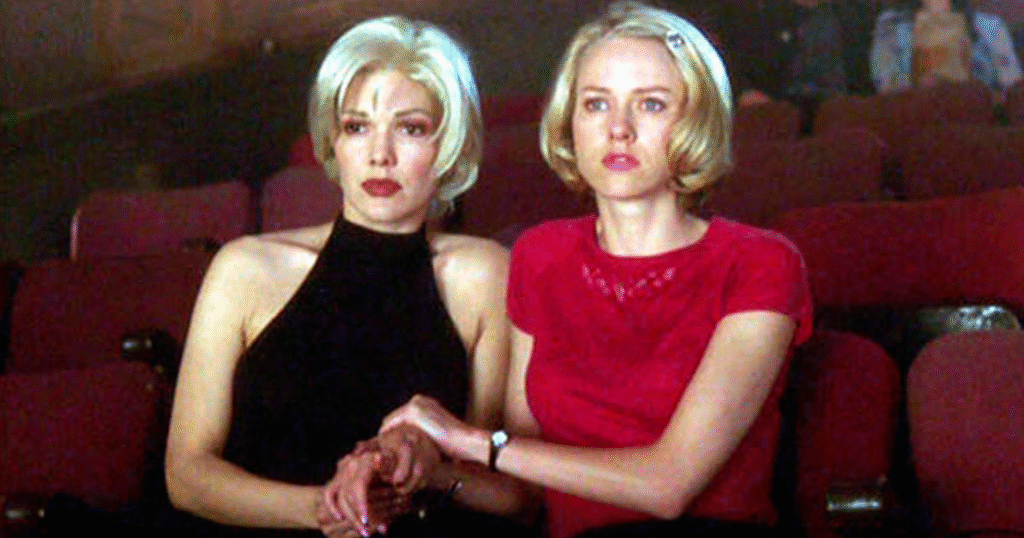Since its debut in 2001, City of Dreams (originally Mulholland DriveDavid Lynch's 1989 film has been disconcerting, fascinating, and intriguing viewers around the world. Considered by many to be one of the greatest masterpieces of modern cinema, the film transcends genres and defies expectations, blending suspense, romance, psychological horror, and dreamlike fantasy. More than that, it represents a true puzzle cinematic that resists easy interpretations or definitive explanations.
Today, with the film available on Amazon Prime, a new generation of viewers can experience this hypnotic puzzle. Therefore, it's worth revisiting (or uncovering) the mysteries surrounding this labyrinthine narrative and understanding why the work continues to spark such heated debate more than two decades after its release.

A film born of chance — and creative chaos
Curiously, City of Dreams emerged from an initially unsuccessful project. Originally conceived as a television series for ABC, the pilot directed by David Lynch was rejected by the network. However, instead of abandoning the idea, Lynch decided to turn the material into a feature film.
This unusual origin resulted in a fragmented narrative structure, filled with clues that simultaneously illuminate and confuse. The transition from television to film intensified the character of puzzle, allowing Lynch more artistic freedom to explore the subconscious, dreams, and the disintegration of identity in a unique way.
The enigma of narrative: dream or reality?
One of the biggest questions that City of Dreams raises—and never definitively answers—is about what's really happening. Are we seeing the reality of a young actress in crisis, or the musings of a fragmented mind in collapse? Or, perhaps, is this all just a dream?
- Scary Session Without Spending Anything: Apps to Watch Horror Online
- Watch Turkish Soap Operas for Free: 3 Must-Have Apps
This deliberate ambiguity is what makes the film so powerful. Lynch doesn't provide ready-made answers. Instead, he throws the viewer into a territory where traditional logic falls apart, and every detail can be part of a new one. puzzle. The line between what is real and what is imaginary remains blurred from beginning to end.
Duplicate characters, mistaken identities: part of the great enigma
Throughout the film, the characters seem to take on new identities. Betty Elms, an aspiring actress played by Naomi Watts, is optimistic, charming, and full of hope. Diane Selwyn, her possible alternate version, is bitter, depressed, and obsessed with failure. This duplicity is confusing, but it also suggests a psychoanalytic framework, as if we were entering the depths of the protagonist's mind.
Similarly, Rita (Laura Harring), initially amnesiac and mysterious, transforms before our eyes. The name she adopts, in fact, comes from a poster for "Gilda," starring Rita Hayworth, a detail that already indicates the narrative's illusory nature. Thus, the constant switching of names and roles is an essential part of the puzzle proposed by Lynch.
Symbolism as part of the puzzle
Unlike conventional directors, Lynch works with symbols, sounds, and sensations. Instead of following a linear logic, City of Dreams works like a collage of images that, combined, form a puzzle sensory. The Silencio Club, for example, is one of the most iconic moments in the work. "There's no band," says the presenter, as the sound and image separate.

This scene encapsulates the essence of the film: illusion, the manipulation of reality, the deep pain hidden beneath layers of apparent beauty. Blue is another color that appears frequently, symbolizing portals between worlds or psychic dimensions. The blue key and the blue box that appear in the film's second act, in fact, mark a narrative turning point that redefines everything the audience believed they understood up until that point.
Soundtrack, sound, and silence: pieces of the emotional puzzle
Angelo Badalamenti, a frequent Lynch collaborator, created a dense, melancholic, and deeply engaging score for City of Dreams. Music, in many moments, replaces dialogue and becomes the protagonist, guiding emotions and anticipating tonal changes.
The use of silence is also essential. Moments of stillness generate discomfort and anticipate ruptures. By manipulating sound, Lynch reinforces the feeling that we are trapped inside a disturbing dream—or worse, inside a nightmare from which we cannot wake.
Watching the film on Amazon Prime deepens your immersion into the enigma
With City of Dreams Available on Amazon Prime, immersion in David Lynch's universe has become more accessible. The platform offers the work with excellent image and sound quality, which makes all the difference in a film where every shadow, color, and sound carries meaning.
More than that, access allows for constant revisits — essential for those who want to decipher each layer of the puzzleAs many fans already know, it's nearly impossible to grasp everything in a single viewing. With each viewing, new clues, interpretations, and questions emerge.
Infinite interpretations: the enigma as a form of freedom
The most fascinating thing about City of Dreams is that there is no single truth. Critics, scholars, and fans around the world have created elaborate theories trying to resolve the puzzle of the film. Some see the work as a metaphor for the dangers of Hollywood; others believe it's all a projection of Diane's guilt; and still others read the film as a representation of the mind divided between the ego and the unconscious.
- Discover Apps to Watch Movies Online Whenever You Want
- Free Romance Movies? These Apps Will Melt Your Heart!
David Lynch, for his part, rarely comments on the meaning of his works. In interviews, he avoids explanations and encourages audiences to form their own interpretations. For him, cinema should be felt, not deciphered. puzzle, therefore, is not to be solved — but experienced.
Curiosities and behind-the-scenes facts that enrich the enigma
Even the film's behind-the-scenes details are shrouded in mystery. Lynch didn't reveal the script's full course to the actors. Naomi Watts and Laura Harring discovered the twists and turns while filming, contributing to the authentic and surreal performances.

Another interesting fact: Naomi Watts, before the film, was virtually unknown in Hollywood. After her performance as Betty/Diane, her career took off. This only reinforces Lynch's ability to reveal unexpected layers in actors and bring raw emotion to the screen.
Why does the enigma of Mulholland Drive still fascinate?
Even after more than 20 years, City of Dreams continues to spark intense discussion. In part, this is because it stands the test of time, not just as an aesthetic work, but as an emotional experience. The viewer doesn't just watch the film—they immerse themselves in it, feel it, get lost and find themselves again and again.
O puzzle behind each scene doesn't age; on the contrary, it renews itself as the viewer evolves. And that's the true magic of David Lynch: creating films that aren't limited to rational comprehension, but that resonate in the mind and heart long after the final credits roll.
Conclusion
City of Dreams, by David Lynch, is much more than a film. It is a hypnotic work, full of symbolism, layers, and ambiguities that challenge the viewer to reflect, feel, and, above all, get lost. By assuming the puzzle As a narrative form, Lynch breaks conventions and invites us to see cinema as pure art.
Available on Amazon Prime, this modern classic continues to spark fascination, spark theories, and stimulate the mind. If you haven't seen it yet—or if you've only seen it once—it's time to dive back into the puzzle of City of Dreams and find out what else he has to reveal.

Don't have this streaming service? Then click the button below and find out how to watch your favorite movies and series for free!

